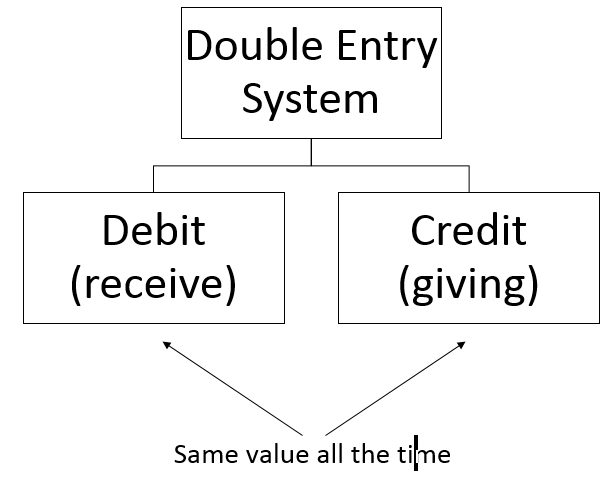Understanding of Double Entry
1. The double entry system is a system that records every business transaction into two separate ledger accounts with the same amount, one account is debited while the other account is credited with the same amount.
2. This system is based on the following principles:
(a) When one party gives, there must be another accepting party
(b) When an amount is given, there must be the same amount is received
3. Then, the accounting principle of double entry system is
(a) debit account receives an amount
(b) credit account that gives something amount
According to this system, the number of debit entries is equal to the total credit record at all times.

4. If a transaction involves an entry in two accounts only, the entry is recognized as an easy entry.
For example, selling goods worth RM300 to Edi on credit.
5. If more than two accounts are involved in a transaction, the entry is known as a compound entry. For example, Edi settles all its debts with check valued RM270.
Why Double Entry System Is Used
1. The double entry system is used to record business transactions for the following reasons
(a) The double entry system is a complete and systematic recording system, with the giving party and the receiving party listed.
(b) The double entry system allows the Trial Balance provided. Based on the Trial Balance, the calculation and accounting provisions can be ascertained. Furthermore, financial statements can be easily prepared to know the performance of the business.
(c) According to the rules of the double-entry system, each record is recorded twice.The debit amount must equal to credit amount at all times.This system can control scams and detect errors easily.
2. Ledger account has two parts, the left side is called debit and the right side is called credit.
3. An account is a summary of systematic and accurate transactions. The account is provided in the form of “T”.
4. All ledger accounts can be classified into two main categories, namely
(a) Individual account
(b) Non-individual account
